Over the last century, we made some extraordinary advances in storytelling technology. We can shoot in complete darkness. We can create environments and characters from nothing more than pixels ⏤ even live, in real-time. And we can literally make an entire feature film using our phones! And, yet, stereotypes in movies still exist.
The progress needle for non-white character representation hasn’t moved nearly as far. So, in this post, we’re going to talk about how we can be better, more inclusive storytellers by avoiding stereotypes in movies — in our writing, our casting, and other production aspects.
Background
Know the history of stereotypes
If we’re going to avoid stereotypes in movies, we need to recognize where they come from. So, let’s briefly go over the stereotypes that the film industry has perpetuated.
Of course, racial stereotypes existed long before the film industry because… colonialism. Many depictions of non-white characters on film were rooted in racial biases and cultural ignorance.
What’s more, non-white characters were nearly always played by white actors in Blackface, Yellowface, or Redface makeup. That’s because originally Hollywood movies were intended for white audiences.
Sound’s advent forced Blackface to be abandoned, but white actors continued playing Asian and First Nations roles for most of the 20th century ⏤ some still do.
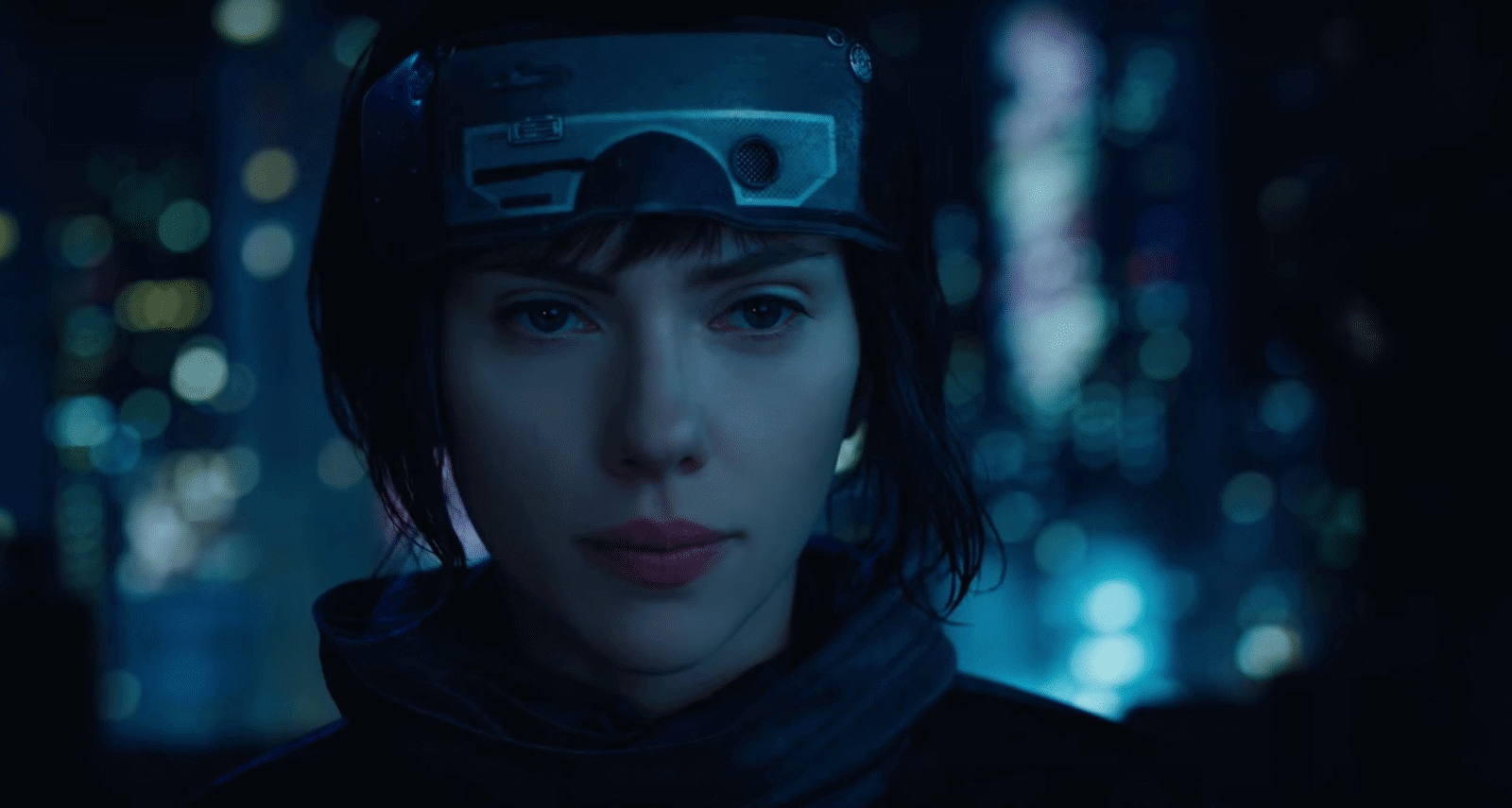
Scarlett Johansson as Motoko Kusanagi in Ghost in the Shell
Black Characters
Black characters in the film industry went from being infantilized buffoons in the Silent Era, to sassy servants (e.g., the “Mammy”) in the Studio Era. Going from menacing thugs and career convicts, to beaten down, poverty-stricken single mothers, and enslaved people during the Television Era.
A brief history of Blackface
There have always been exceptions. But many were from Black filmmakers telling stories about Black people for Black audiences.
Over the decades these stereotypes in movies have become less prevalent. But we still see vestiges in modern stock characters.
11 Stereotypes Black Men Play
For instance, there’s the Black Best Friend. Whether male or female, the Black Best Friend is there to unravel the white lead’s (frequently romantic) entanglements, usually as comic relief.
Like the Mammy, the Black Best Friend is “sassy” and has no identity outside her relationship to the protagonist. Her goals or desires are hardly ever her own or even depicted.
On top of this, the Black Best Friend is almost never referred to by the protagonist if she’s not in the scene. See also Gay Best Friend.
Black female stereotypes in movies
Not so much a stereotype in movies, but a common trope is the Black character being the first to die. Remember [SPOILER ALERT] Missandei death during the Game of Thrones series finale?
Deaths like Missandei’s are rooted in the assumption that audiences care more about the white characters than any others. True, Missandei isn’t technically the first major character to die in the finale.
However, she is one of only two Black characters who made it to the series end. And while the white supporting characters were all given heroic deaths in battle defending others, Missandei’s death served no real purpose in the story and is basically just a throw-away.
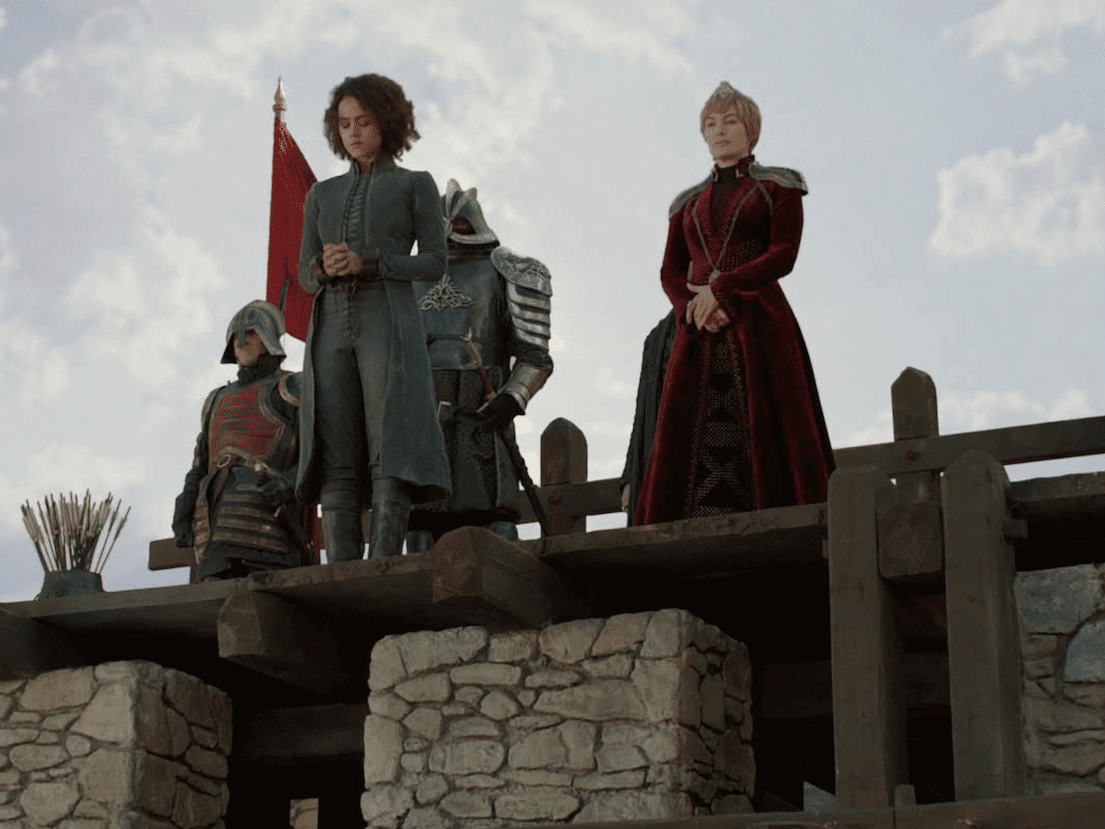
Missandei is the first major character to die in Game of Thrones final season
Asian Characters
Asians have long been depicted as “perpetual foreigners.” No matter how many generations of citizenship for an Asian character, there is a latent “other” that prevents their written development.
They have gone from being the “Yellow Peril” in the Silent Era, to probable spies in the Studio Era, to faceless saboteurs, refugees, and convenience store owners in the Television Era.
Yellowface is a bad look
More recently, Asian characters are stereotyped as the “model minority”— overachieving, hard-working, and never political. Men, especially, are frequently relegated to decidedly un-sexy, awkward tech geeks and math nerds.
In contrast, stereotypes in movies for Asian women characters are highly sexualized. They are frequently portrayed as either domineering (the Dragon Lady) or subservient (the Geisha).
Or they are “tiger mothers” — very controlling every aspect of their children’s lives in order to make sure they do everything “the right way” ⏤ from ace-ing all their schoolwork, to attending the right university, to the right partner in marriage.
Outside the Action genre, Asian protagonists are rare. When they aren’t the villain, Asian characters are normally relegated to supporting roles like the Sidekick.
The Sidekick is another character who is only present to help the white protagonist achieve their goals, frequently through superior understanding whatever the main character’s obstacle is (e.g., tech). Think Silicon Valley’s Dinesh Chugtai.
Fresh Off the Boat - Tiger Mom Says No Dishwashers
Native American Characters
Like Asian characters, First Nations characters are viewed with an other-ness that consigns them to supporting roles for the white protagonist. Native protagonists are also similarly unusual outside the Western or other Period Drama, or films by Native filmmakers (e.g., Sherman Alexie).
Native characters’ modern depiction make them typically hyper-spiritual and attuned to the natural world, or they are heavily burdened by the extreme poverty and isolation of a life on the reservation.
Even today Native characters are sometimes portrayed by white actors (e.g., The Lone Ranger).
Native people react to stereotypes in movies
Latinx and Hispanic Characters
Hispanic stereotypes in movies basically went from hard-drinking, villainous Bandits and sexually objectified Harlots in the Silent Era to drug-dealing gangs of Cholos and domineering female “man-eaters” in the modern era.
The Studio Era’s The Dark Woman stereotype is today’s Fiery Latina, who is usually paired with a white man. Think Sofia Vergara on Modern Family. This stock character, along with the over-sexed Latin Lover, can be traced to a very specific era in American history:
The Fiery Latina and the Latin Lover
One more Latino stock character is the Cop. Whether Police, FBI, ATF, etc., the male Cop is often the one who chose “the academy” instead of following his best friend into the local gang.
Because she grew up speaking Spanish, the female Cop interprets for the white male partner during questioning, or explains everything to the grieving immigrant mother when her drug-dealer son is killed.
These characters are also frequently assigned the stock conflict of having to balance the culture they grew up in with the one they chose as their profession.
LGBTQ Characters
Throughout film history, LGBTQ representation had to be coded, even if the original source material is perfectly clear about who a LGBTQ character is.
Openly Queer characters were all but non-existent outside of indie or cult films. When finally depicted in mainstream media, it is usually as either camp comedy or high drama.
LGBTQ Character Clichés
With few exceptions, LGBTQ characters were primarily written as a device to bring conflict and/or dimension to the straight protagonist. They were almost never allowed to have a happy ending to their own stories ⏤ a trope so common, there’s a name for it: “bury your Gays.”
"Bury Your Gays" TROPE Definition
WHAT DOES “BURY YOUR GAYS” MEAN?
“Bury your Gays” is a term that refers to the common writers trope having the LGBTQ character die rather than allow their story arc to peacefully resolve, whether happily or not. It can also be applied to a LGBTQ character who is brought in for a single episode of a series and never seen or spoken of again.
Still topping the list of most common LBGTQ stereotypes in media is the Gay Best Friend. While the Black Best Friend can be assigned to a male or female protagonist, the Gay Best Friend is almost exclusively given to a white female protagonist.
He is usually flamboyant and super judgy, and his main purpose is to give the leading lady advice on everything from what to wear to how to deal with a relationship. Think Matthew from Big Mouth but without his own storylines.
Who Needs a Boy When I Got You
The clip above spotlights the stereotype of the Gay Best Friend perfectly. But when it comes to transgender characters, we are only just beginning to see representation that is not in service of the cis-gender protagonist.
Muslim and Arab Characters
Characters with ancestry in the Middle East have long been imbued with inherent violence and possessiveness. Male characters are depicted as misogynist fundamentalists who abuse the women in their lives.
8 Muslim Stereotypes in Media
Women are portrayed as oppressed and subservient victims of their abusive culture. And of course they are either secretly terrorists, or thought to be terrorists who are exonerated by the white protagonists.
The Magical Other
Sometimes the white protagonist’s entire story arc is about overcoming some internal conflict that keeps them from achieving their objective. In these instances, writers often call upon the Magical Negro/Magical Asian/Magical Indian to help guide them.
The Magical Negro is a term coined by the great Spike Lee to describe a Black character who is written specifically to help white protagonists reach their goals. But the same character comes in Asian (especially Chinese), First Nations (“Indian”) and even Gay varieties.
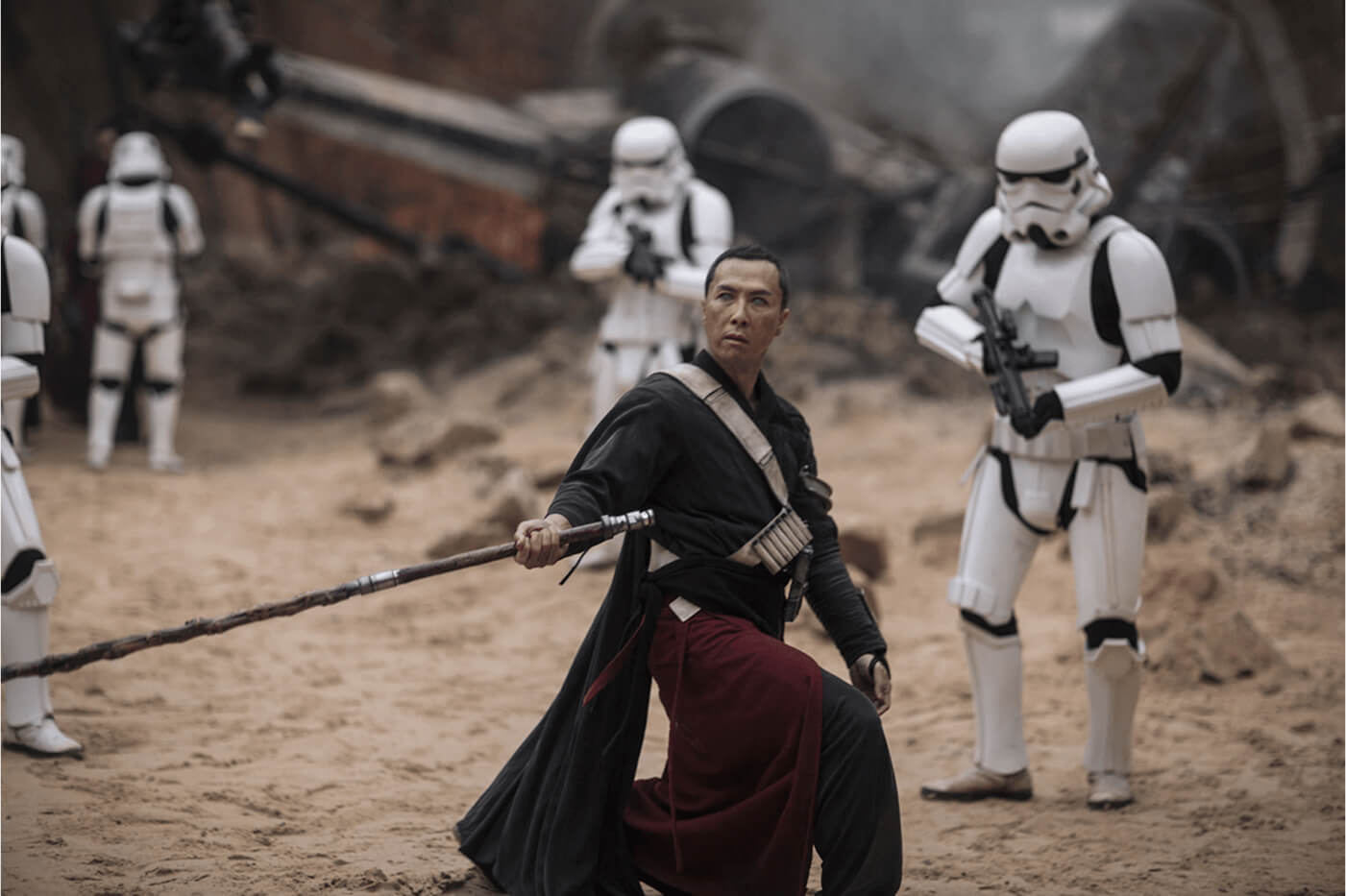
Chirrut Imwe - Rogue One’s magical Asian
The Magical Negro/Asian/Indian provides sage counsel or mentorship, often speaking in cryptic subtext (or “tough love” hard truths) that force the white protagonist to parse out the meaning, a significant part of their emotional journey.
These Magical characters may have their own goals and desires, but these are always revealed gradually and strictly to serve the white protagonist’s character development. In other words, as the protagonist begins to see the Magical Other as a fully dimensional person, so do we.
Education
Subvert stereotypes in movies & TV
We haven't completely gotten away from these stereotypes in movies but there are great strides being made that we should acknowledge. Now that we recognize some of the most common stereotypes in media, let’s look at some examples of positive representation.
Avoiding Stereotypes
Watchmen
Angela Abar (a.k.a. Sister Night) is a Black female character a leader in her community, and among her white (mostly male) crime-fighting colleagues. She is a tough-as-nails, fearless investigator pursuing the truth of her best friend’s murder.
While she may not have superpowers, she is a skilled fighter and an excellent negotiator.
Born in Vietnam, Angela still has a strong connection to her Vietnamese roots. She speaks fluent Vietnamese and makes Vietnamese pastries in her bakery, which she called Milk and Hanoi.
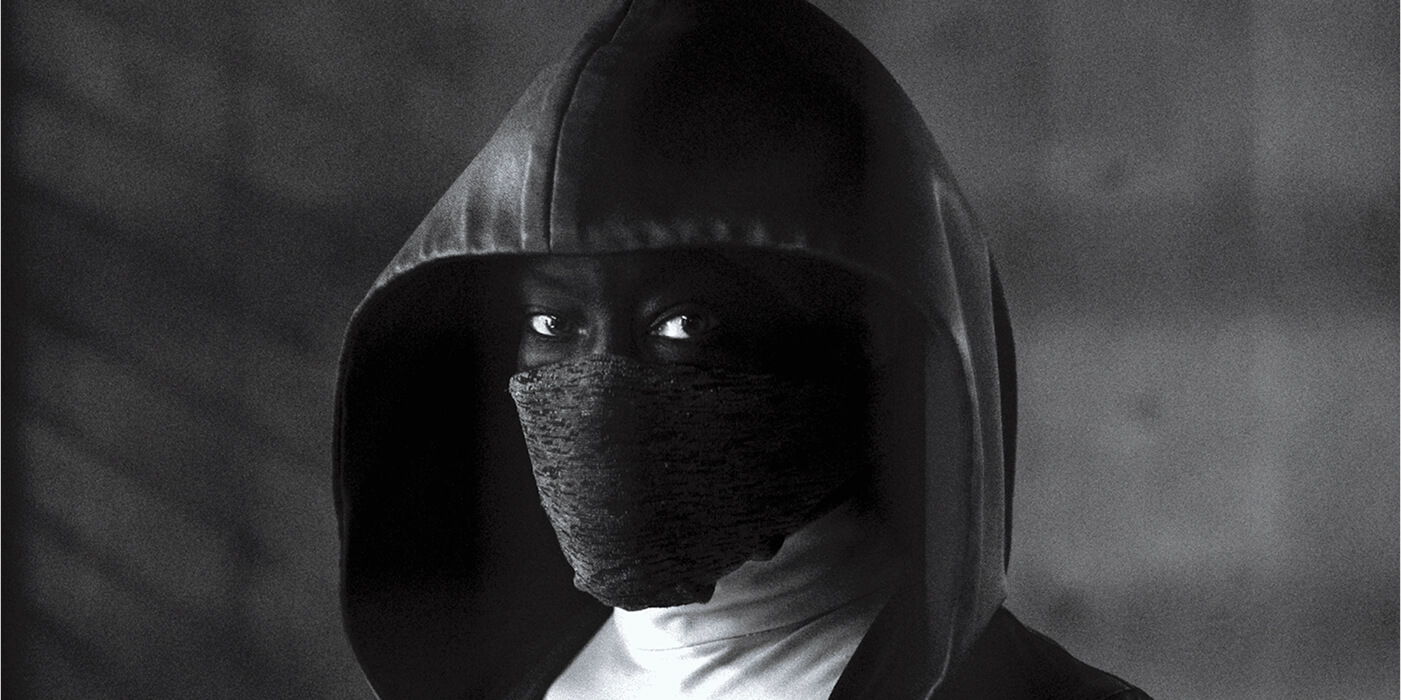
Regina King is Sister Night
Angela and her husband Cal adopted her white partner’s children after they were killed. Cal is the stay-at-home parent while Angela is the one who is always on call.
This character breaks almost every stereotype for Black (or female) characters. She is a protagonist in a story where nearly all the other characters are white.
She is financially sound, even well off. And she is completely independent in every way.
As the audience, we get the impression that all things in Angela’s life is a deliberate choice, rather than coping with circumstance or caving to some external pressure.
Subverting STEREOTYPES
Pose
This FX nighttime soap opera is about the Ball culture during the late 1980s and early 1990s. It is a world inhabited entirely by LGBTQ characters, none of whom are white.
The main cast of Pose
Pose breaks the transgender stereotype with an entire transgender ensemble that are played by transgender actors. The episodes portray issues that are specific to transgender people that are relevant today.
More than half of the show’s episodes were written by transgender women, who are all producers on the show.
Ignoring STEREOTYPES
Rogue One: A Star Wars Story
This prequel to the original Star Wars trilogy features Mexican-American actor Diego Luna, using his natural accent, as the Rebel Alliance leader.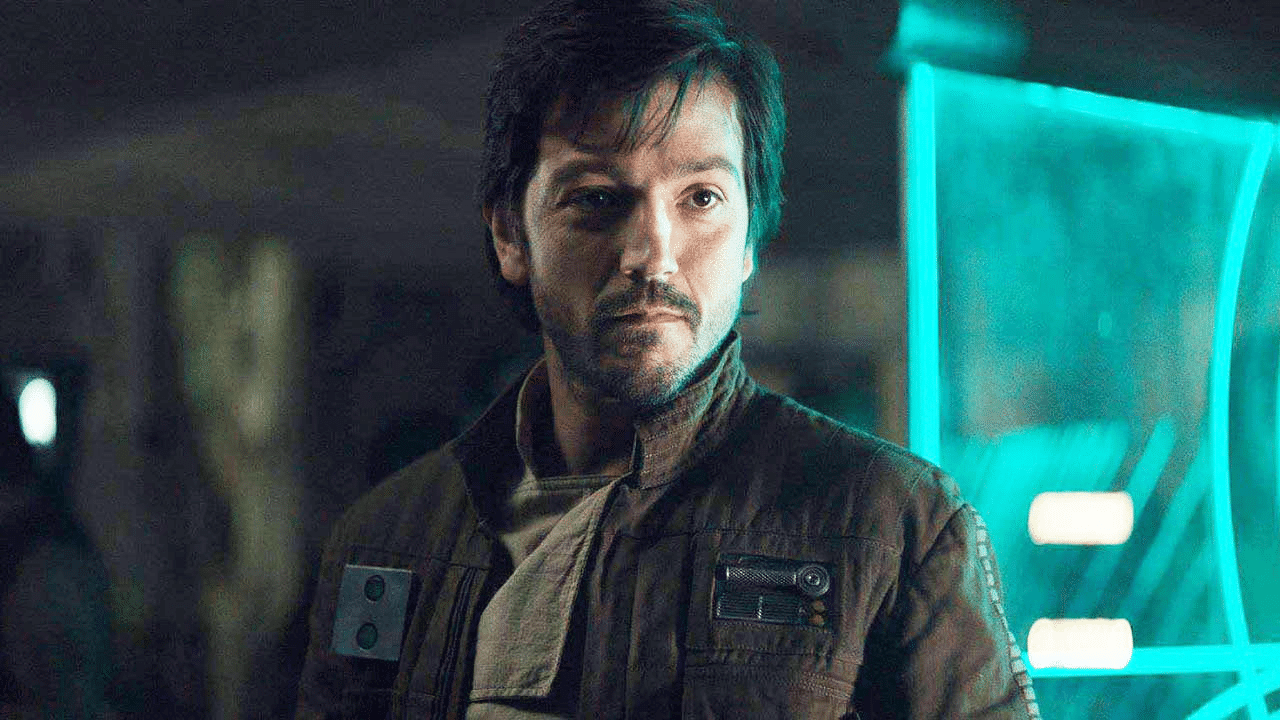
Diego Luna as Cassian Andor in Rogue One
This representation matters in a universe where the accents are limited to either American or British. The film also features openly Muslim actor Riz Ahmed as Bodhi Rook, a cargo pilot who defects from the Empire and joins Rogue One.
Taking Back STEREOTYPES
Black Panther
An Oscar-winning film, in which the lead, most of the cast, and crew are Black, that isn’t about slavery. A film that has Black characters control their own nation, wealth, and developments with sophisticated tech.
This representation for Black people is unprecedented.
TV Without Stereotypes
Killing Eve
Korean-Canadian Sandra Oh plays the eponymous Eve. Her ethnicity is entirely irrelevant. Although, she later explains her Canadian accent through having been born in England but raised in North America.
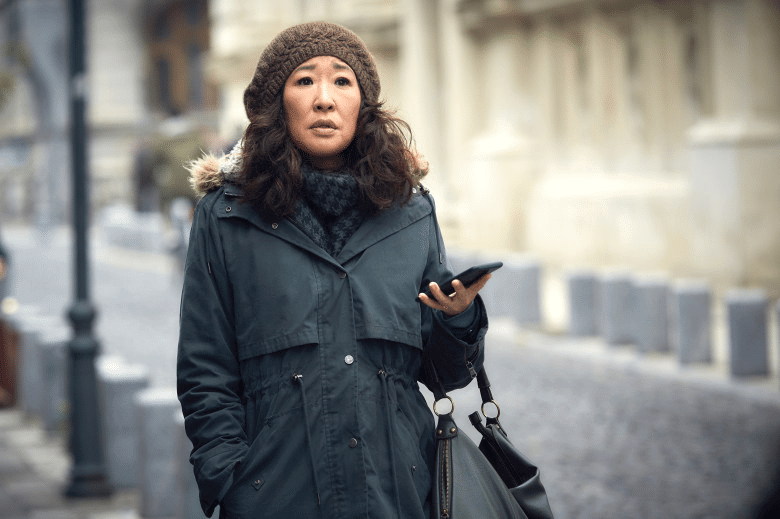
Sandra Oh as Eve Polastri
Killing Eve subverts the Spy genre by using the female perspective. It is adapted by Phoebe Waller-Bridge from Villainelle series of novels, and all the major characters ⏤ those with power in the story ⏤ are women.
Movies Beyond Stereotypes
Crazy Rich Asians
A rom-com with an all Asian cast, writer, and director. The Asian Black Panther in terms of representation. The film was a massive hit in the U.S. and around the globe, bringing in over $238 million at the box office.
Streaming Without STEREOTYPES
Ramy and The Mindy Project
Comedian Ramy Youssef’s autobiographical sit-com is about what it means to be a millennial Muslim. Ramy is devout, but he also just wants to do the same things as other American millennials without experiencing the guilt and stress his religious devotion causes.
Mindy Kaling’s The Mindy Project takes the opposite track. Her Desi childhood rarely has anything to do with her character’s decisions. Her character, Mindy Lahiri, is simply trying to balance her work as an OB/GYN with her personal life, and find someone to settle down with.
Rebooting Without STEREOTYPES
One Day at a Time
This reboot to the legendary 1970s Norman Lear sitcom centers on a Cuban-American family, the Alvarezes, and the challenges they face individually and as a family.
The ensemble cast and showrunner are nearly all Hispanic. The show also tackles many relevant issues in ongoing storylines. One in particular is army veteran Penelope’s PTSD and how she has to navigate the Veteran’s Administration to get the services she needs.
Production
Be conscious about representation
As you approach your next project, keep these strategies in mind so that you, too, can avoid stereotypes in movies. Ask yourself, "In our project, is our representation more inclusive?"
Hire more women and people of color in the writers' room
Writers write what they know. So, in order to have accurate representation, you need to have writers who lived the experiences you’re trying to represent.Whether you’re writing about a Muslim woman or a transgender man or a lesbian, if you aren’t any of those people yourself, hire screenwriters who are.
Cast non-white actors
Sure, it’s acting and any good actor should be able to play any role believably. But it’s not just about talent.We’re talking about representation now and there is plenty of talent out there who aren’t white or straight or male or even binary. Keep Diego Luna as Cassian Andor in your heart.
On the other hand, if your story is already about, say Native American characters, then you should cast Native actors. And try to cast Gay actors to play Gay people, and so on.
Related Posts
Hire more women and people of color behind the camera
A director whose lived experience closely resembles the story will make more inclusive decisions.
They will choose shots that someone with that life might not consider; they will be more trusted by the actors because they understand the story from personal experience.
And a set that closely resembles the real world will automatically imbue positive representation.
UP NEXT
Casting tips for filmmakers
A great cast can make or break your project on many levels. But, many filmmakers look at the casting process as a path of least resistance.
